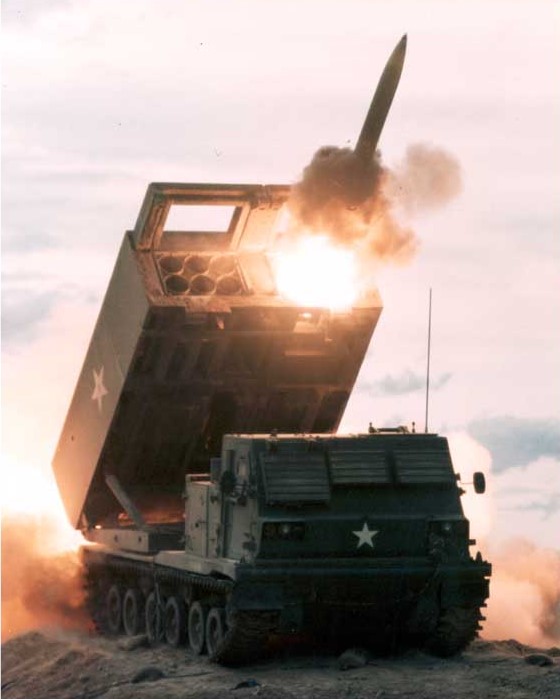|
44M Lidérc
The 44M Lidérc (Hungarian: succubus) was an experimental air-to-air rocket developed in Hungary during World War II. It had an acoustic proximity fuse invented by Károly Pulváry ( Technological University of Budapest). The acoustic device was a highly advanced technology in 1944 and the research of necessary electronics was quite a complex project. The sensor consisted of a super-sensitive microphone, and a squelch principle circuit with two electron tube amplifiers. Cutaway plan of the Lidérc'''' (tortenelem.444.hu) The fuse worked excellently with the artificial American bomber-engine sound in the Aerotechnical Institute's wind tunnel. During air combat every Messerschmitt Me 210, Me 210 Ca-1 destroyer-aircraft (Hungarian: romboló, German: zerstörer) would have launched 2-4 Lidérc into a bomber group which was expected to cause great damage and significantly impact the morale of bomber crews. The main goal was to disarrange bombing sorties rather than destroy airplanes in ... [...More Info...] [...Related Items...] OR: [Wikipedia] [Google] [Baidu] |
Succubus
A succubus is a demon or supernatural entity in folklore, in female form, that appears in dreams to seduce men, usually through sexual activity. According to religious tradition, a succubus needs male semen to survive; repeated sexual activity with a succubus will result in a bond being formed between the succubus and the man; a succubus cannot drain or harm the man with whom she is having intercourse. In modern representations, a succubus is often depicted as a beautiful seductress or enchantress, rather than as demonic or frightening. The male counterpart to the succubus is the incubus. Etymology The term derives from Late Latin ''succuba'' "paramour" from ''succubare'' "to lie beneath" (''sub-'' "under" and ''cubare'' "to lie"), used to describe this female supernatural being's implied sexual position relative to the male sleeper's position. The English word "succubus" dates from the late 14th century. The succubus is also known as the earth wanderer, and she seeks her victi ... [...More Info...] [...Related Items...] OR: [Wikipedia] [Google] [Baidu] |
Proximity Fuze
A proximity fuze (or fuse) is a Fuze (munitions), fuze that detonates an Explosive material, explosive device automatically when the distance to the target becomes smaller than a predetermined value. Proximity fuzes are designed for targets such as planes, missiles, ships at sea, and ground forces. They provide a more sophisticated trigger mechanism than the common contact fuze or timed fuze. It is estimated that it increases the lethality by 5 to 10 times, compared to these other fuzes. Background Before the invention of the proximity fuze, detonation was induced by direct contact, a timer set at launch or an altimeter. All of these earlier methods have disadvantages. The probability of a direct hit on a small moving target is low; a shell that just misses the target will not explode. A time- or height-triggered fuze requires good prediction by the gunner and accurate timing by the fuze. If either is wrong, then even accurately aimed shells may explode harmlessly before reaching ... [...More Info...] [...Related Items...] OR: [Wikipedia] [Google] [Baidu] |
Budapest University Of Technology And Economics
The Budapest University of Technology and Economics ( hu, Budapesti Műszaki és Gazdaságtudományi Egyetem or in short ), official abbreviation BME, is the most significant university of technology in Hungary and is considered the world's oldest institute of technology which has university rank and structure. It was the first institute in Europe to train engineers at university level. It was founded in 1782. More than 110 departments and institutes operate within the structure of eight faculties. About 1100 lecturers, 400 researchers and other degree holders and numerous invited lecturers and practising expert specialists participate in education and research at the Budapest University of Technology and Economics. Approximately 1381 of the university's 21,171 students are foreigners, coming from 50 countries. The Budapest University of Technology and Economics issues about 70% of Hungary's engineering degrees. 34 professors/researchers of the university are members of the Hungar ... [...More Info...] [...Related Items...] OR: [Wikipedia] [Google] [Baidu] |
Messerschmitt Me 210
The Messerschmitt Me 210 was a German heavy fighter and ground-attack aircraft of World War II. Design started before the war, as a replacement for the Bf 110. The first examples were ready in 1939, but they proved to have unacceptably poor flight characteristics due to serious wing planform and fuselage design flaws. A large-scale operational testing program throughout 1941 and early 1942 did not cure the type's problems. The design entered limited service in 1942, but was soon replaced by the Messerschmitt Me 410 Hornisse, a further development of the Me 210. The failure of the Me 210's development program meant the ''Luftwaffe'' was forced to continue operating the Bf 110 after it had become outdated, despite mounting losses. Design and development Messerschmitt designers had started working on an upgrade of the Bf 110 in 1937, before the production version of the Bf 110 had even flown. In late 1938, the Bf 110 was just entering service, and the RLM started looking ahead ... [...More Info...] [...Related Items...] OR: [Wikipedia] [Google] [Baidu] |
Strategic Bombing
Strategic bombing is a military strategy used in total war with the goal of defeating the enemy by destroying its morale, its economic ability to produce and transport materiel to the theatres of military operations, or both. It is a systematically organized and executed attack from the air which can utilize strategic bombers, long- or medium-range missiles, or nuclear-armed fighter-bomber aircraft to attack targets deemed vital to the enemy's war-making capability. The term terror bombing is used to describe the strategic bombing of civilian targets without military value, in the hope of damaging an enemy's morale. One of the strategies of war is to demoralize the enemy so that peace or surrender becomes preferable to continuing the conflict. Strategic bombing has been used to this end. The phrase "terror bombing" entered the English lexicon towards the end of World War II and many strategic bombing campaigns and individual raids have been described as terror bombing by commen ... [...More Info...] [...Related Items...] OR: [Wikipedia] [Google] [Baidu] |
Csepel Island
Csepel Island (Hungarian: ''Csepel-sziget'', ) is an island on the Danube in Hungary. It is long; its width after sections of bifurcation and rejoining (confluence) varies from . It has an area of and its population is 165,000. The isle extends south from Budapest; its northern point or section is Csepel – Budapest's District XXI. Most of the island is accessible from Budapest by the suburban railway. Towns include Ráckeve, Szigetszentmiklós, Szigethalom and Tököl. Csepel island was the first centre of the Hungarian conquest of the Carpathian Basin ( hu, honfoglalás: "conquest of the homeland"), being the early homestead of Árpád's tribe. The island is named after Árpád's horse groom, Csepel. It features Hungary's tallest structure, Lakihegy Tower The Lakihegy Tower is a 314-metre-high (1,031 ft) radio mast at Szigetszentmiklós-Lakihegy in Hungary. The Blaw-Knox type tower was built in 1933 and was one of Europe's tallest structures at the time of c ... [...More Info...] [...Related Items...] OR: [Wikipedia] [Google] [Baidu] |
Érd
Érd (; german: Hanselbeck; hr, Andzabeg) is a town in Pest County, Budapest metropolitan area, Hungary. It is a city with county rights A city with county rights (or urban county, Hungarian: ''megyei jogú város'', MJV) is a level of administrative subdivision in Hungary. Since 1994 all county seats are automatically awarded this status, and since 2012 this is the only way a new .... History The area has been inhabited since ancient times. Archaeological findings indicate that prehistoric humans lived here 50,000 years ago. Érd itself was first mentioned in documents in 1243. The name comes either from the word ('forest') or from ('stream'). During the Ottoman wars in Europe, Ottoman occupation of Hungary, Érd was captured by the Turks in 1543, after the castle of Székesfehérvár fell. The Turks built a motte-and-bailey, motte castle and a mosque here. During this time, the area was called Hamzsabég (Hamzabey). In 1684, the army led by Charles V, Duke of Lorraine d ... [...More Info...] [...Related Items...] OR: [Wikipedia] [Google] [Baidu] |
Lake Velence
Lake Velence (german: Welenzer See), an endorheic basin, is the third largest natural lake in Hungary. It is a popular holiday destination among Hungarians. The lake has an area of 26 km2, one third of which is covered by the common reed. Because of the sunny climate of the area and the shallowness of the lake, it is one of the warmest lakes in Europe: its temperature in the summer may reach 26 to 28 °C. Location Lake Velence is located in Fejér county, close to the M7 motorway between Budapest and Székesfehérvár, at the foot of the Velence Mountains. Settlements along the shore * Gárdony ** Agárd ** Dinnyés *Kápolnásnyék *Nadap *Pákozd *Pázmánd *Sukoró *Velence ** Velence-újtelep ** Velencefürdő *Vereb *Zichyújfalu Wildlife A part of the lake is a bird reserve with a lot of species. Events The lake was the venue for the World Rowing Masters Regatta in September 2019. Gallery File:Civertanvelenceitolegi1.jpg File:Velence 1.jpg File:Velenceit ... [...More Info...] [...Related Items...] OR: [Wikipedia] [Google] [Baidu] |
Incendiary Ammunition
Incendiary ammunition is a type of ammunition that contains a chemical that, upon hitting a hard obstacle, has the characteristic of causing fire/setting flammable materials in the vincinity of the impact on fire. World War I The first time incendiary ammunition was widely used was in World War I, more specifically in 1916. At the time, phosphorus was the primary ingredient in the incendiary charge and ignited upon firing, leaving a trail of blue smoke. These early forms were also known as "smoke tracers" because of this. Though deadly, the effective range of these bullets was only 350 yards (320 m), as the phosphorus charge burned quickly. Incendiary bullets called "Buckingham" ammunition were supplied to early British night fighters for use against military zeppelins threatening the British Isles. The flammable hydrogen gas of the zeppelins made incendiary bullets much more deadly than standard ones which would pass through the outer skin without igniting the gas. Similar ... [...More Info...] [...Related Items...] OR: [Wikipedia] [Google] [Baidu] |
Rocket Artillery
Rocket artillery is artillery that uses rocket explosives as the projectile. The use of rocket artillery dates back to medieval China where devices such as fire arrows were used (albeit mostly as a psychological weapon). Fire arrows were also used in multiple launch systems and transported via carts. First true rocket artillery was developed in India by the Kingdom of Mysore. In the late nineteenth century, due to improvements in the power and range of conventional artillery, the use of early military rockets declined; they were finally used on a small scale by both sides during the American Civil War. Modern rocket artillery was first employed during World War II, in the form of the German Nebelwerfer family of rocket ordnance designs, Soviet Katyusha-series and numerous other systems employed on a smaller scale by the Western allies and Japan. In modern use, the rockets are often guided by an internal guiding system or GPS in order to maintain accuracy. History Early history ... [...More Info...] [...Related Items...] OR: [Wikipedia] [Google] [Baidu] |
Nebelwerfer
The Nebelwerfer (smoke mortar) was a World War II Nazi Germany, German series of weapons. They were initially developed by and assigned to the German Army (Wehrmacht), Wehrmacht's "smoke troops" (''Nebeltruppen''). Initially, two different mortars were fielded before they were replaced by a variety of rocket launchers ranging in size from . The thin walls of the rockets had the great advantage of allowing much larger quantities of gases, fluids or high explosives to be delivered than artillery or even mortar shells of the same weight. With the exception of the Balkans Campaign (World War II), Balkans Campaign, ''Nebelwerfer'' were used in every campaign of the German Army during World War II. A version of the 21 cm calibre system was adapted Werfer-Granate 21, for air-to-air use against Allied bombers. Weapons 10 cm Nebelwerfer 35 The lower muzzle velocity of a mortar meant that its shell walls could be thinner than those of artillery shells, and it could carry a larger pay ... [...More Info...] [...Related Items...] OR: [Wikipedia] [Google] [Baidu] |
Soviet Armed Forces
The Soviet Armed Forces, the Armed Forces of the Soviet Union and as the Red Army (, Вооружённые Силы Советского Союза), were the armed forces of the Russian SFSR (1917–1922), the Soviet Union (1922–1991), and the Bolshevik Party from their beginnings in the Russian Civil War of 1917–1923 to the collapse of the USSR in 1991. In May 1992, Russian President Boris Yeltsin issued decrees forming the Russian Armed Forces, which subsumed much of the Soviet Armed Forces. Much of the former Soviet Armed Forces in the other 14 Soviet republics gradually came under those republics' control. According to the all-union military service law of September 1925, the Soviet Armed Forces consisted of the Ground Forces, the Air Forces, the Navy, the State Political Directorate (OGPU), and the convoy guards. The OGPU was later made independent and amalgamated with the NKVD in 1934, and thus its Internal Troops were under the joint management of the Defence and In ... [...More Info...] [...Related Items...] OR: [Wikipedia] [Google] [Baidu] |

.jpg)



_4.jpg)

